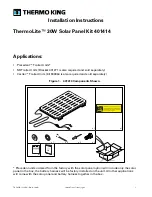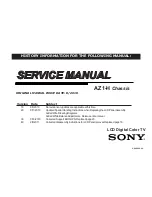
TERMINAL LAYOUT AND WIRING
This graph is for upright
instruments with
dimension A, C, E.
For instruments with
dimension B, F, just
clockwise rotate the
graph for 90 degree,
and the terminal
numbers keep
unchanged.
AU1
M1
M2/MIO
AUX
ALM
COMM
AL2
1
2
3
4
5
6
7
8
9
10
11
12
15
16
17
18
19
20
13
14
AL1
AU2
COM
COM
N/C
N/O
N/O
N/O
+
+
A
B
+
100-240VAC~
+
+
OUTP/M3
COM
COM
N/O
N/C
N/O
N/O
COM
N/C
N/O
+
+
COM
COM
N/O
N/O
N/O
N/C
+
+
IN3
IN2
IN1
CJC
+
+
OP2/IN6
OP1/IN5
IN4
IN3
IN2
IN1
Thermocouple wiring:
When wiring a thermocouple input, the compensation wire should be qualified and directly
connect to the corresponding terminals in correct direction. When M1 module is installed in
J1 socket, a Cu50 resistor can be connected between terminal 17 and 20 to compensate the
cold junction; short connection between terminal 17 and 20 can realize ice-point
compensation.
Two-wire RTD wiring:
RTD can select two-wire or three-wire method by B of “AF” parameter. Two-wire method
enable to input two channel signals in one module, but user has to measure and calculate the
resistance of the wire. To apply two-wire method, the J2 module should be installed and the
resistance of every wire should be less than 2ohm.
AI-702M/704M/706M can measure the lead wire resistance of two-wire method and save it to
parameter “Sc”. However, the lead wire resistance changes as the temperature changes.
If the lead wires has the same ambient temperature as that of the instrument and no other
resistor series connects to the lead wire, the indicators can compensate the resistance
change by measuring the ambient temperature (compensation coefficient is 0.004/
℃
);
otherwise, two-wire method is not recommended.
Three-wire RTD wiring:
Three-wire method is a traditional wiring method requiring that the resistance of the three wire
be equal. One “J0” module supports 1 three-wire RTD. Three-wire method provides higher
measurement accuracy.































